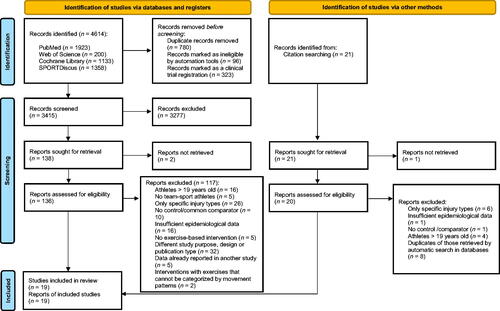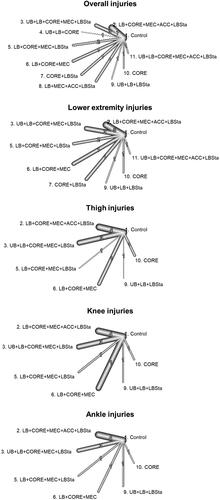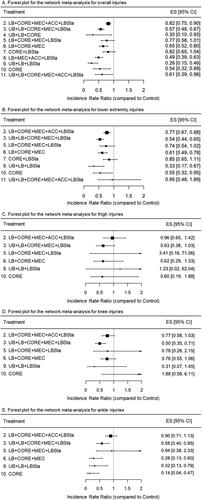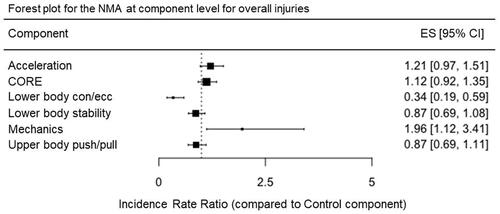Figures & data
Figure 1. PRISMA flow diagram of the selection of studies for this systematic review and network meta-analysis.

Table 1. Component breakdown of injury prevention programs according to specific movement patterns.
Figure 2. Network graphs for the direct evidence comparing programs for overall, lower extremity, thigh, knee, and ankle injuries. UB: upper body pushing and pulling; LB: lower body concentric and eccentric; CORE: core (anti-rotation and core bracing); MEC: mechanics (change of direction (COD), jumping and landing, and rebounding); ACC: acceleration (including deceleration, and re-acceleration); LBSta: lower body stability.

Figure 3. Forest plots for the random-effects network meta-analyses conducted for overall, lower extremity, thigh, knee, and ankle injuries. UB: upper body pushing and pulling; LB: lower body concentric and eccentric; CORE: core (anti-rotation and core bracing); MEC: mechanics (change of direction (COD), jumping and landing, and rebounding); ACC: acceleration (including deceleration, and re-acceleration); LBSta: lower body stability. Values below 1 favor the intervention over the control (treatment 1).

Table 2. Results of the network meta-analysis for overall injuries: estimates and 95% confidence intervals for comparisons between each pair of injury prevention programs (programs in rows vs. programs in columns).
Figure 4. Forest plots for the random-effects network meta-analyses at component level conducted for overall injuries. con/ecc: concentric and eccentric; push/pull: pushing and pulling. Values below 1 favor the training component over the control.

Supplemental Material
Download Zip (113.9 KB)Data availability statement
R codes are publicly available on https://data.mendeley.com/datasets/hg4m522fc5/2. Additional data may be accessed upon reasonable request.
